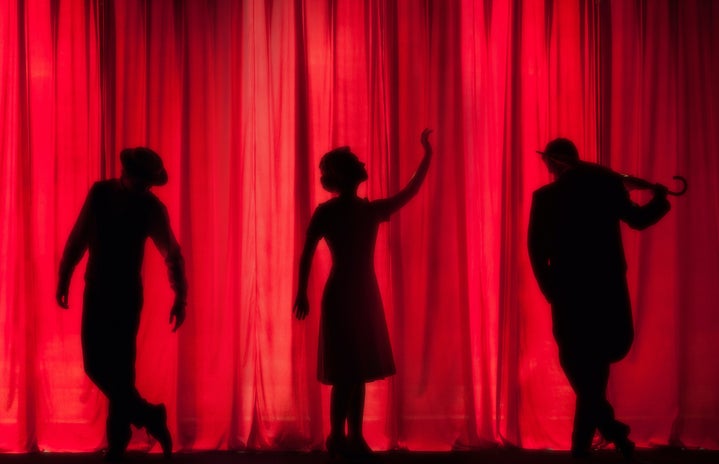“Whenever I go home, I feel so stupid for choosing this major, but as soon as I get back I realize that they just don’t quite understand it the way that [those majoring in dance] do,” said Alysha Wilde.
Wilde is a freshman at Arizona State University, and she’s currently pursuing a degree in dance.
Arizona State University offers more than 350 different undergraduate majors and more than 450 graduate degree and certificate programs in a wide range of subjects. These subjects include English, engineering, teaching, history, business, and many more. ASU also offers the opportunity to pursue a Bachelor of Fine Arts and a Master of Fine Arts in dance, as well as a Bachelor of Arts in performance and movement.
College classes can take place in lecture halls, classrooms and labs. And while students majoring in dance still have general education requirements to complete that take place in rooms like those, their day-to-day looks a lot different.
Olivia Orlandini is a freshman at ASU currently pursuing a degree in dance. When asked what she thought the biggest difference was between being a dance major versus another major, she talked about the environment and physical activity that comes with it.
“I think the biggest difference is that a lot of our classes have to do with physical activity and movement rather than sitting in a lecture.” Orlandini said.
Jadah Nealy is a sophomore at ASU and currently pursuing a degree in performance & movement. Because the majority of classes that dance majors take are movement-based, Nealy said one of the biggest differences between majoring in dance compared to other majors is the effect it can have on you physically.
“I think that the biggest difference is how [those majoring in dance] have to constantly use our bodies and take extra care for it because it is our tool.” Nealy said.
At ASU specifically, students majoring in dance take classes in creative practices, dance and digital arts, dance history, ethnography and philosophy, movement practices, and seminars.
The styles of dance that ASU students can take classes in include ballet, hip hop, contemporary modern, contemporary ballet, jazz, Afro-Latin and more.
Orlandini said her favorite class she’s taken so far is somatic practices.
“This class has allowed me to think out of the box and stray away from just doing what I was taught growing up when improving and choreographing.” Orlandini said.
Those who pursue an MFA in dance at ASU take coursework involving choreography, dance science and somatics, dance teaching praxis, dance and technology, community engagement, practices of equity and inclusion, professional partnerships, and dance scholarship and theory. Many of the MFA students also teach undergraduate dance classes at ASU.
Brandon Lombardo is currently a second year graduate student pursuing a MFA in dance with an area of study in gender performance and choreography and performance.
Lombardo said that a difference between majoring in dance compared to other programs is the amount of unique possibilities that dance exposes you to.
“I feel as if the world is endless in dance,” Lombardo said. “The many different areas within dance can help you achieve something tangible besides movement. You can be an educator, philosopher, a writer, choreographer, dancer, artistic director, etc.”
According to Data USA, those who have earned degrees in visual and performing arts have declined by about 4% as of 2021. Maricopa County, where ASU resides, awards the third highest number of degrees in visual and performing art, following only Los Angeles County and New York County.
According to an article by The Washington Post, close to 40% of college graduates in America regret the major they chose. And the most common majors to regret are degrees in humanities and arts.
“My grandparents really tried to convince me to choose a different major and just minor in dance instead, but I knew in my heart I was not going to be happy if I did that,” Nealy said. “I was not considering any other major, I knew dance was my direction. It was either dance or not going to school at all. I was so dramatic, but I still feel this way.”
Orlandini said her family and friends have always been supportive of her decision to pursue dance, but she said her plan to add a double major in business entrepreneurship later on in college might have something to do with that.
“I think people would definitely question my decision to pursue dance more if I wasn’t adding a double major and if I didn’t have a plan for what I wanted to do after college,” Orlandini said.
Lombardo said that his parents were not supportive in the beginning, but they are now proud that he made the decision that he did.
“My step-father always told me that I was not going to make a living being a dancer since that will not cover the bills,” Lombardo said. “But I somehow changed his mind when I found a way to support myself by being a teacher in the field of dance.”
According to Indeed.com, it is not mandatory to have a degree in dance to become a professional dancer. So, why would someone invest the time and money into pursuing dance in college? The reasons vary depending on the person, but common themes include networking and improving dance skills and overall knowledge.
After college, Wilde said her goal is to dance in a company.
“I believe that a degree in dance helps to achieve this goal because you make such great connections, especially in a big college like ASU where you can then meet people who can help you achieve this goal in one way or another,” Wilde said.
Nealy said that a college degree will help her obtain her goal of dancing with a company and/or being a backup dancer because of the networking opportunities, but also because she can dance so much every day and continue to improve.
Orlandini said her goal is to be part of a contemporary dance company and then later open her own dance studio.
“Not going to college briefly crossed my mind but ultimately I wanted to go to college to meet new people, experience a new area, gain a deeper understanding and knowledge of dance, and to gain the knowledge and skills I need in order to open up my own dance studio,” Orlandini said.
When asked what the biggest challenge of being a dance major in college is, Wilde said that one of them is “explaining to people the significance of being a dance major.”
Similarly to Wilde, Nealy said that the biggest struggle of pursuing dance is how others perceive those who major in dance.
“I would say the biggest challenge of pursuing dance in school is people with other majors and people in general thinking that what I do is ‘easy’ or less than because it’s dance,” Nealy said.
Nealy also explained how the college application process was stressful, in part because she knew her family was not completely on board with her pursuing dance.
“[My family and I] had long talks and conversations about how much dance means to me,” Nealy said. “And how much I want to further my education on dance and how I can also still can be stable and successful, but most importantly happy because I am pursuing dance.”


